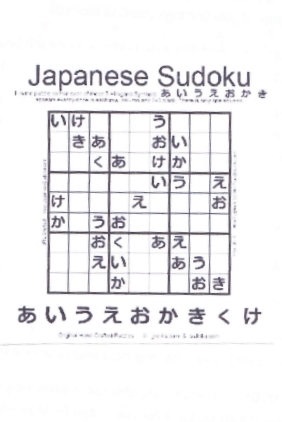MY LOVE AFFAIR WITH SUDOKU: HOW I GOT HERE.
I’ve always had an affinity for numbers; who else would be dorky enough to play number games with license plates while sitting in traffic? Have I possibly missed my calling? Too late now, so I do Sudoku.
It would almost seem that I was fated to gravitate to Sudoku.
I worked in a library and libraries are magnets for the newest and trendiest so of course Sudoku was a hot subject. I made a valiant effort to resist temptation for some time and that wasn’t easy, but It wasn’t very long before my curiosity got the best of me, and on a beautiful Spring Monday morning and I was just loaded with more energy than brains, I jumped right in to give it a try. It would have helped if I’d paid any attention to the rules so helpfully appended to the puzzle; but I didn’t, so consequently and very unfortunately, I missed a rather strategic step. Instructions be damned. The result was utter mayhem.
At first the struggle was monumental; life was essentially and substantially put on hold. I had great difficulty performing my expected duties like dressing, getting to work, cooking; I was obsessed. I was determined to beat the system.
One of the first things I did to ease some of the stress was motivated by the size of the of The Washington Post puzzle; it was printed too small to allow for marking. Being a bit on the obsessive side, nothing would do but to run all over town, on a Sunday, in a snowstorm, (not an advisable activity in the DC area) in search of a pen with a point fine enough and which didn’t come in increments of multiples.
Naturally the Post redesigned its puzzle; probably the next day.
ORIGIN AND PARTICULARS
After I got over the initial trauma of encounter, I started to wonder, about the name for instance. Why did it have a Japanese sounding name?
I checked and discovered that Its progress to fame proved amazingly circuitous and involved more than a smidgen of imaginative thinking. Apparently there were similar games as early as the 19th century: The version we are familiar with was designed, or perhaps more correctly developed, by an American in 1979. By 1984 and in its modern form it had appeared in the U.S. as well as Japan.
It was in Japan that it acquired its unusual name. the word SUDOKU is a combination of the Japanese characters SU meaning “number”, and DOKU meaning “single”; consequently “Single Numbers”. Perfect!
From there it continued on its path towards success thanks to a New Zealander who encountered it in Japan. Perceiving its commercial value, he proceeded to write a computer program specifically designed to generate puzzles. In 2004, and with the hope of taking advantage of his design, he managed to persuade a London newspaper to publish it. The result of this was immediate success: Evidence of this is a letter sent the very next day to the newspaper by an aggravated reader complaining of having missed his stop on the “ tube” due to preoccupation with solving the puzzle.
It swept England and from there it crossed the pond to the US.
By 2005 it was well established and had in fact become a world-wide success; one of the most popular puzzles of all times. There were TV shows, competitions, there was specialized merchandise, and every other commercial enterprise imaginable.
